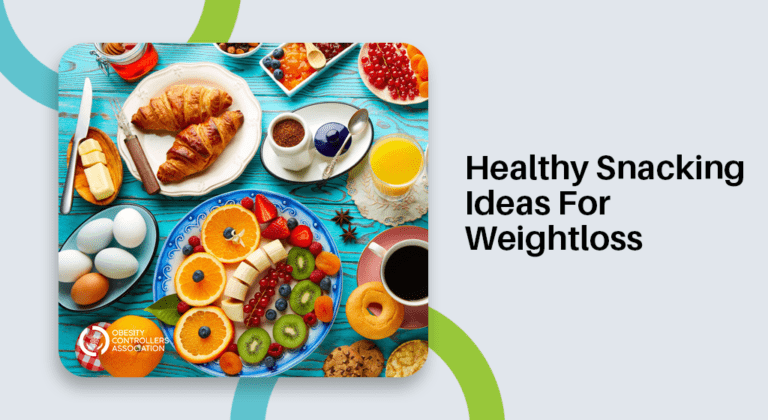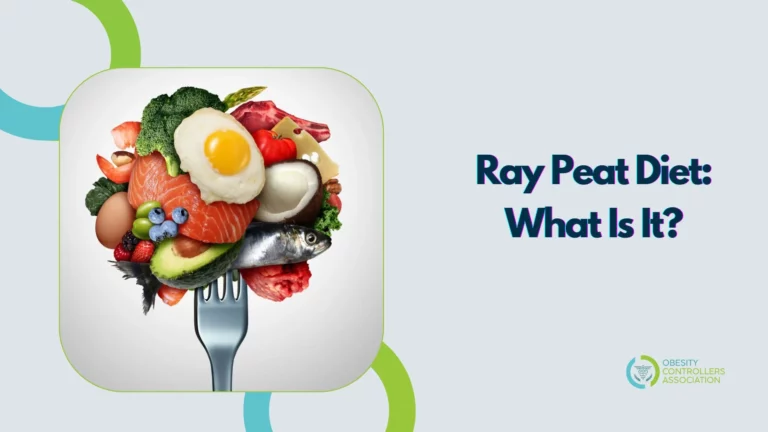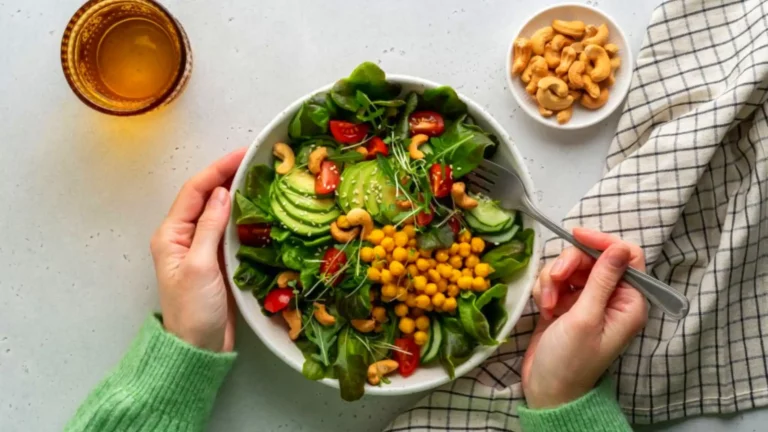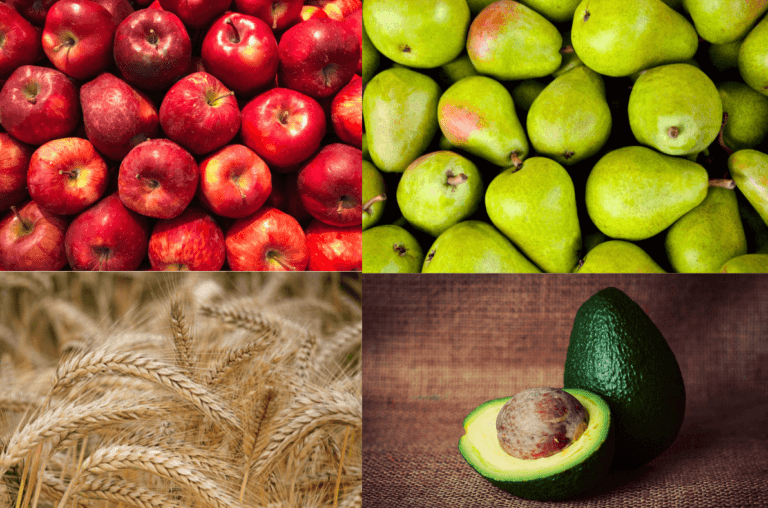Vegan Diet – A Complete Beginner’s Guide!
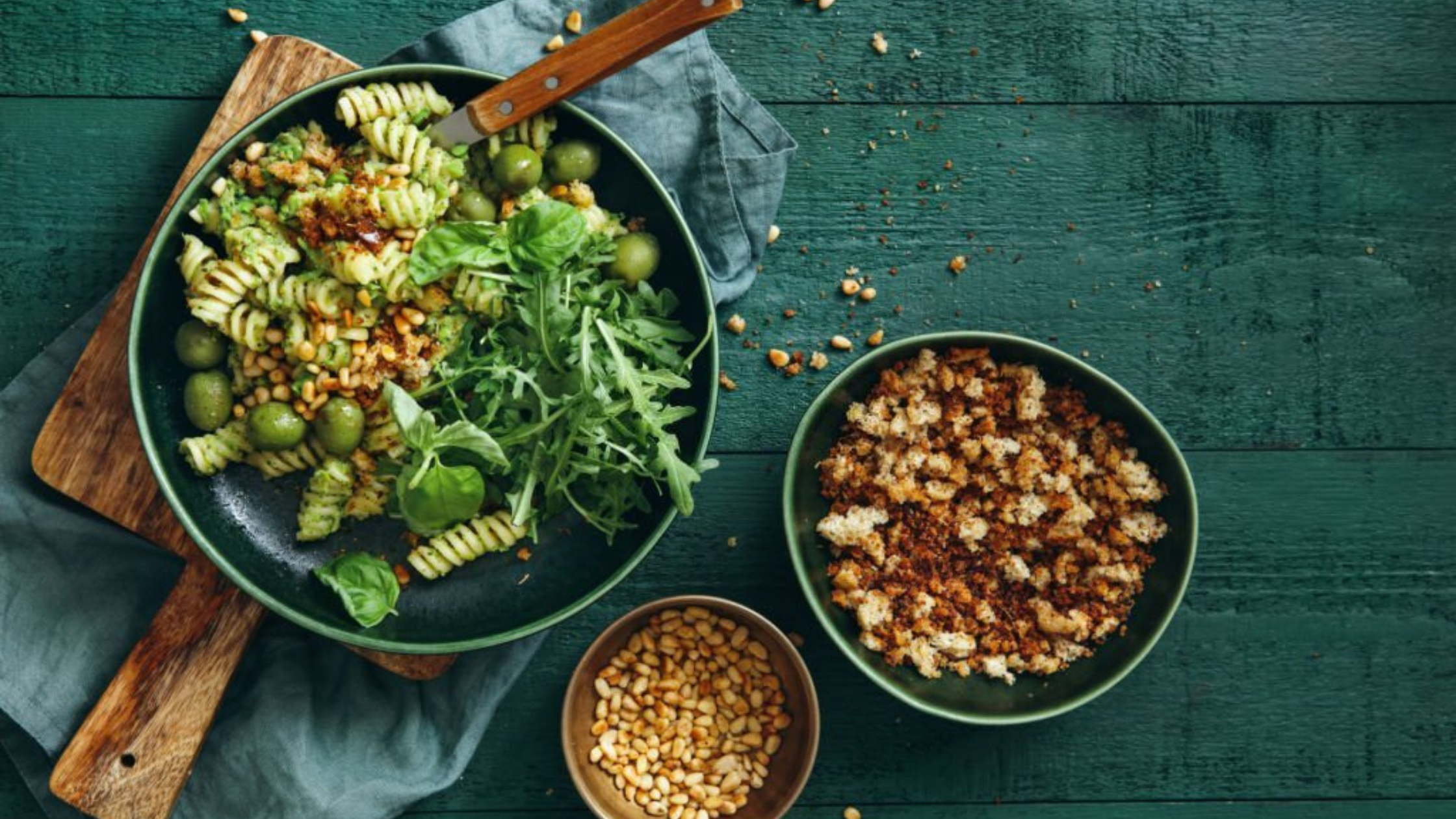
In recent years, we have seen exponential growth in the popularity of vegan diets. A vegan diet includes plant-based meals but excludes meat, fish, and animal byproducts. Many pick this eating plan to modify their physique and improve their health. Is greater health a foregone conclusion when you forego meat and dairy? Many experts suggest that this is not the case. A vegan diet might be difficult for some people to stick to.
Before committing to the details of a vegan diet, educate yourself about its benefits and drawbacks. To start. examine a typical day’s worth of meals to feel the benefits it creates. Then, if you feel that this is the best approach for you, get started with transitional advice.
Vegan Diet – Is It A Healthy Diet To Be Followed?
The vegan diet has grown in popularity. Health, ethics, and love towards the environment are making Veganism a popular concept. This diet may provide a number of health benefits, including better blood sugar control and cardiovascular health. If your objective is to lose weight, a vegan diet can help you with that as well.
However, eating just plant foods may raise your risk of vitamin shortages in rare circumstances. That’s where our comprehensive guide to the vegan diet comes in. It strives to give you all you need to know to live a healthy vegan lifestyle.
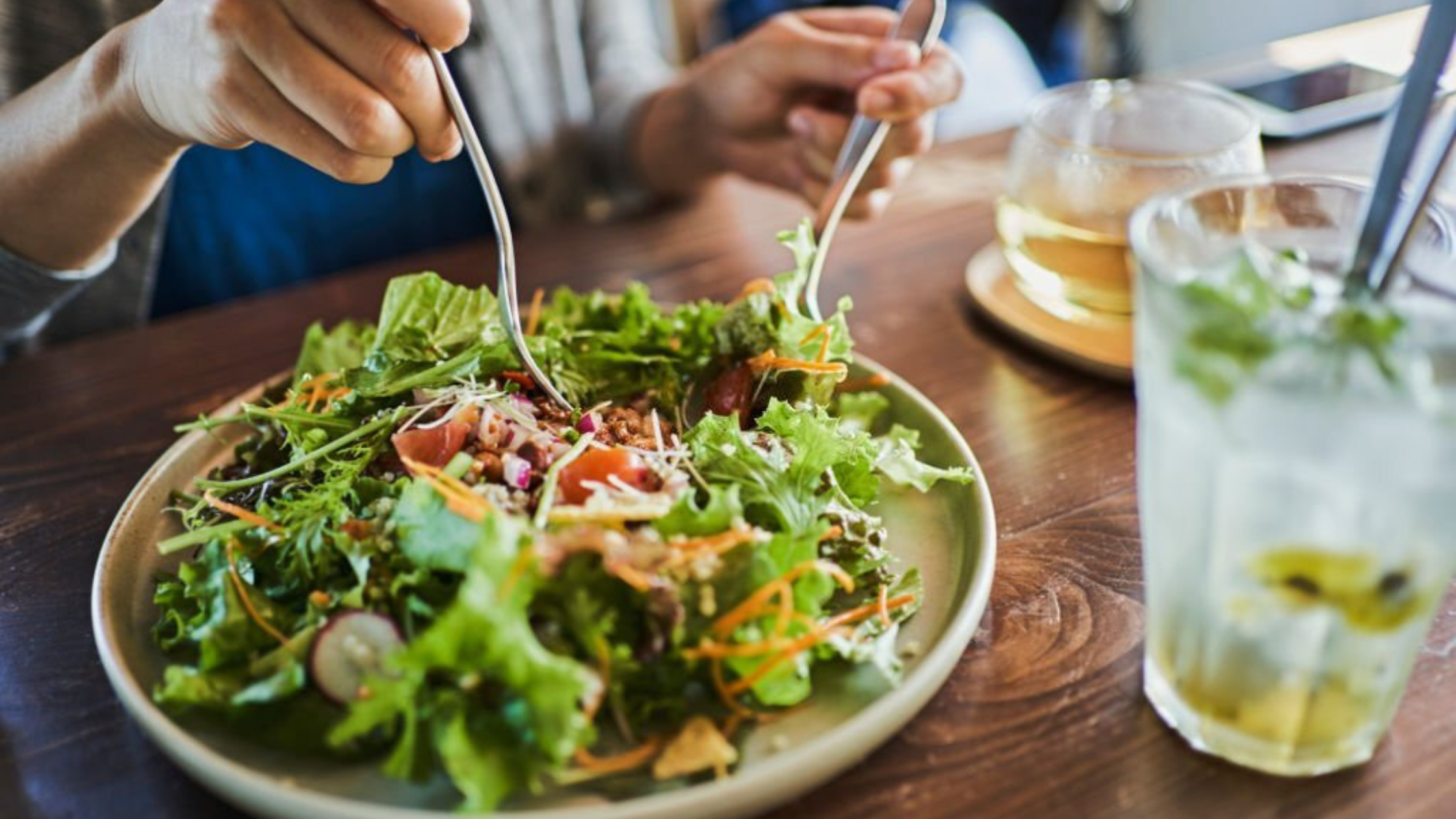
What Is The Vegan Diet?
A vegan diet is described as a way of life that forbids animal exploitation or suffering, whether for clothing, food, or other reasons. This diet excludes all animal products, including eggs, meat, and dairy. A person has multiple reasons for choosing a vegan diet. These mainly vary from ethical to concern for the environment, but they might also be motivated by a desire to better one’s health.
Vegan diets are much more than a passing fad. Veganism is a philosophical and social movement that advocates for the abolition of all human-caused suffering in all animals as well as living beings. Vegans avoid ingesting, using, or purchasing food items or goods containing animal-derived substances.
Those who adopt a vegan diet for moral consideration will also avoid foods and goods that have involved animals in the manufacturing process, such as animal-tested shampoos or wines and brews filtered via isinglass. Vegan diets differ significantly from vegetarian diets, which often omit mainly meat and fish.
We should also differentiate between vegan and plant-based diets, which are frequently used interchangeably. To be clear, eating plant-based does not necessarily imply avoiding all animal products. It basically implies that you eat mostly plant-based foods.
Concerns regarding whether it is feasible to consume a nutritionally complete diet without obtaining micro- and macronutrients from animal sources rise as the number of individuals studying vegan diets climb. Nonetheless, studies suggest that a well-balanced diet rich in vegetables, grains, nuts, and pulses may boost energy, reduce inflammation, and promote reasonable weight control.
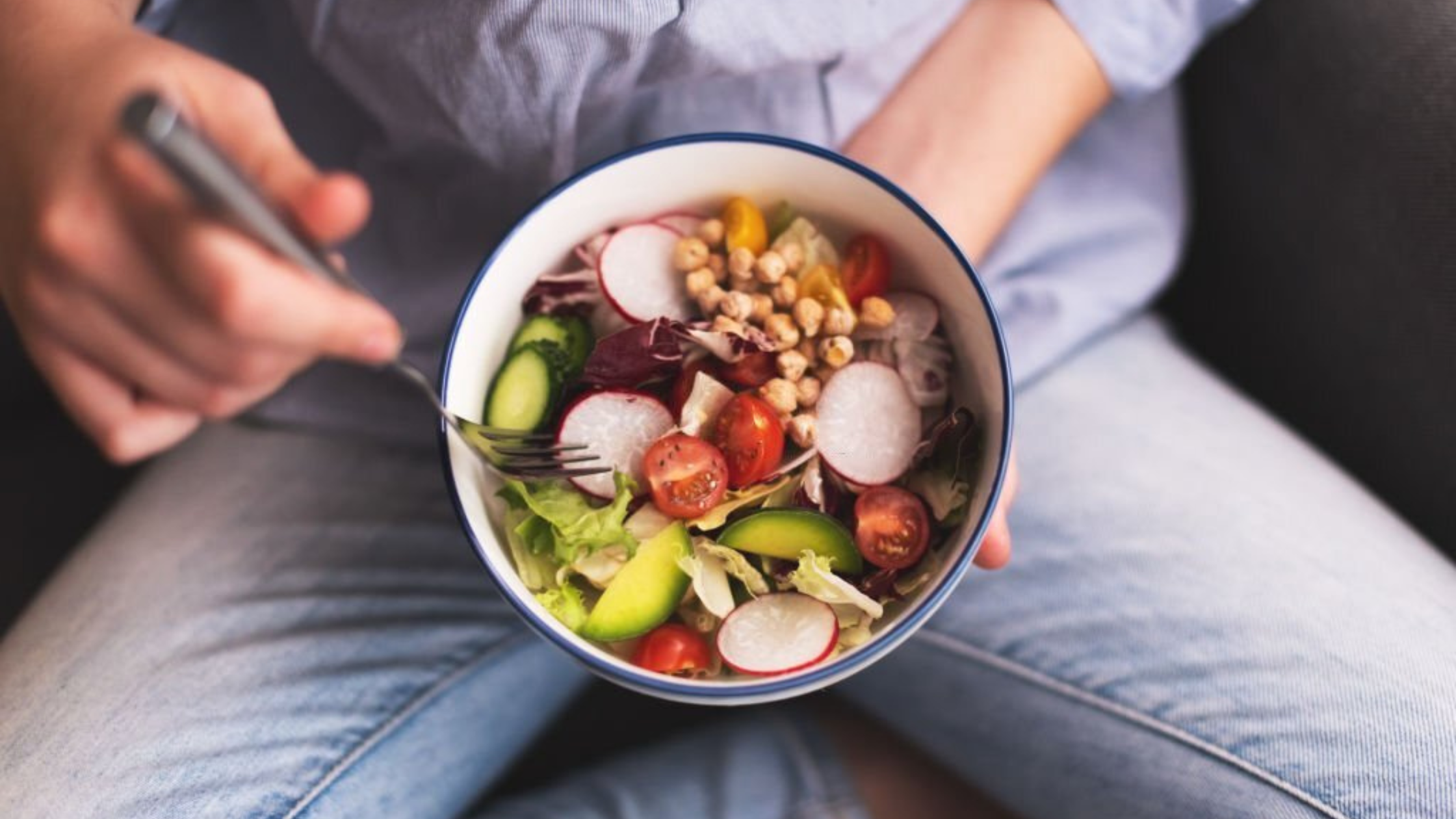
Types of Vegan Diets
Being a vegan will not always mean you are healthy. Because the quality of a diet is determined by the foods that comprise it especially if you are vegan. As a result, certain vegan diets can provide several health benefits, whereas others may not. Here are a few vegan diet subcategories you may encounter:
How does a vegan diet work?
Vegans abstain from all animal products. On this diet, you avoid foods derived directly from animals (including beef, poultry, hog, or lamb) and any foods containing animal by-products. Vegetable soup, for example, should be eschewed if the stock used to create it contains an animal bone.
Vegans shun shellfish, seafood, and any dish containing fish-based components. Some omega-3 fatty acid-containing meals and supplements, for instance, are incompatible if the origin is fish oil. Dairy and eggs are not only not ingested on a vegan diet, but neither are the numerous foods that include dairy and eggs.
Bread and some other baked products, chocolate, and numerous protein supplements are examples. Finally, some unusual items, such as some varieties of sweets, some brands of wine and beer, veggie burgers, and even certain red-colored meals, are not acceptable on a vegan diet. This is because they include honey, gelatin, or other animal-derived substances.
What do vegans eat?
Vegan diets are not restrictive, contrary to popular belief. Whole foods are inherently high in taste and have a variety of textures, so including a variety of items in your meals will surely minimize food weariness. Getting creative when cooking also aids in the replacement of nutrients lost when avoiding animal products. Among the most nutritionally vegan ingredients are:
Iron
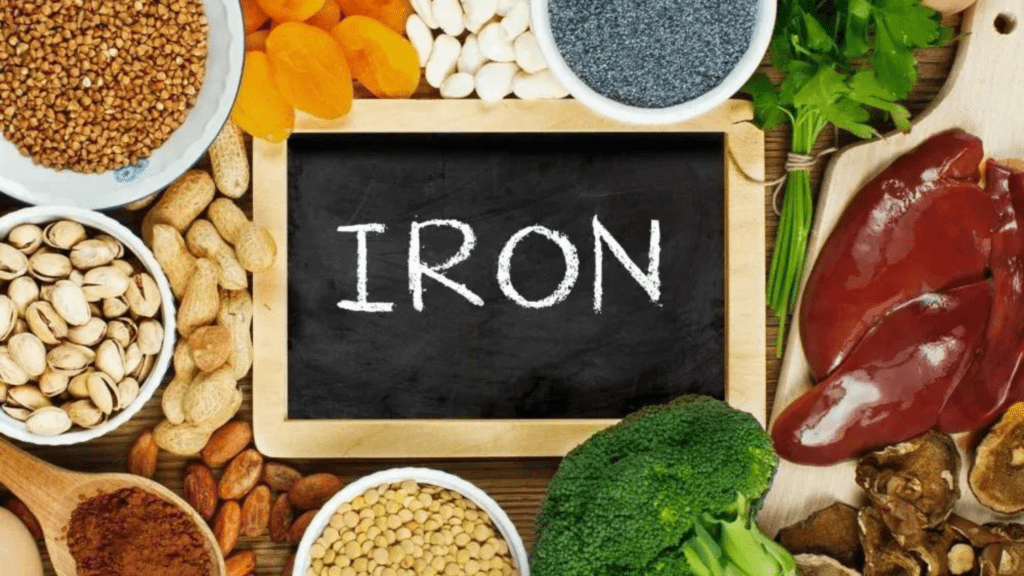
Some of the best sources of vegan-based iron are:
- Lentils. The lentil is a kind of dietary legume. It’s an annual herbaceous plant with lens-shaped seeds. It grows to approximately 40 cm in height, and the seeds develop in pods with two seeds from each. As food crops, Canada and India produce the bulk of the world’s total, accounting for 58% of the total.
- Tofu. Tofu is a meal made by congealing soy milk and pressing the resulting curds into solid white blocks of varying softness; it can be silky, soft, stiff, extra strong, or super strong. Tofu comes in a wide range of textures in addition to these primary textural groups.
- Spinach. Spinach is a blooming plant with lush green leaves native to Asia’s central and western regions. The food belongs to the Amaranthaceae family, the Chenopodioideae subfamily, making it a part of the Caryophyllales order. Its leaves are a popular culinary vegetable that may be eaten fresh or after being preserved by canning, chilling, or dehydration.
- Dark chocolate. Dark chocolate is a type of chocolate that contains cocoa solids as well as cocoa butter but not milk or butter like milk chocolate. Sour chocolate or bitter chocolate is dark chocolate that has no extra sugar.
- Kidney beans. The kidney bean is termed after the human kidney because it resembles one. Red kidney beans are not to be confused with other types of red beans, including adzuki beans.
- Leafy greens. Leaf vegetables are plant leaves consumed as a vegetable, occasionally accompanied by fragile petioles and shoots. They are also known as green vegetables, salad greens, leafy greens, pot herbs, or just greens.
- Chickpea. The chickpea, often known as the chickpea, is a perennial legume in the Fabaceae family, subfamily Faboideae. Its numerous varieties are gram or Bengal gram, garbanzo or garbanzo bean, or Egyptian pea. Chickpea seeds provide a lot of iron.
- Quinoa. Quinoa is an amaranth-family flowering plant. It is a herbaceous annual plant farmed mainly for its edible seeds; the seeds contain more protein, iron, B vitamins, and nutritional elements than many kinds of cereal.
- Pumpkin seed. A pumpkin seed, commonly known as a pepita in North America, is a nutritious seed of squash or other pumpkin varieties. The seeds are typically flat and unevenly oval, with a white outer husk that peels away to reveal a bright green tint.
Calcium

Some of the best sources of vegan-based calcium are:
- Broccoli. Broccoli is a cabbage family edible green plant with a vast flowering head, stem, and small accompanying leaves consumed as a vegetable. Broccoli belongs to the Italica cultivar family of the Brassica oleracea species.
- Kale. Kale, often known as leaf cabbage, is a collection of cabbage cultivars produced for their edible leaves, while some are also used as ornamentals. The leaves of kale plants are green or purple, and the core leaves do not form heads.
- Almonds. The almond tree is endemic to Iran and neighboring countries, especially the Levant. This tree’s tasty and extensively cultivated seed is also known as the almond.
- Chia seed. Chia seeds are the nutritional seeds of Salvia hispanica, a perennial herb in the mint group native to southern and central Mexico, or Salvia columbariae, a similar species endemic to Mexico and the southwestern United States. Chia seeds are elliptical and grayish with white and black dots, measuring around 2 millimeters in diameter.
- Navy bean. The navy bean is a type of common bean that originated in the Americas. It is a dry white bean with an oval, somewhat flattened form that is smaller than most white beans.
- Nut. A nut is a type of fruit that consists of a hard nutshell that protects an edible kernel. A broad range of dry seeds are commonly referred to as nuts in common language and culinary contexts, but in a botanical context, nut means that the shell doesn’t crack to release the seed.
Protein
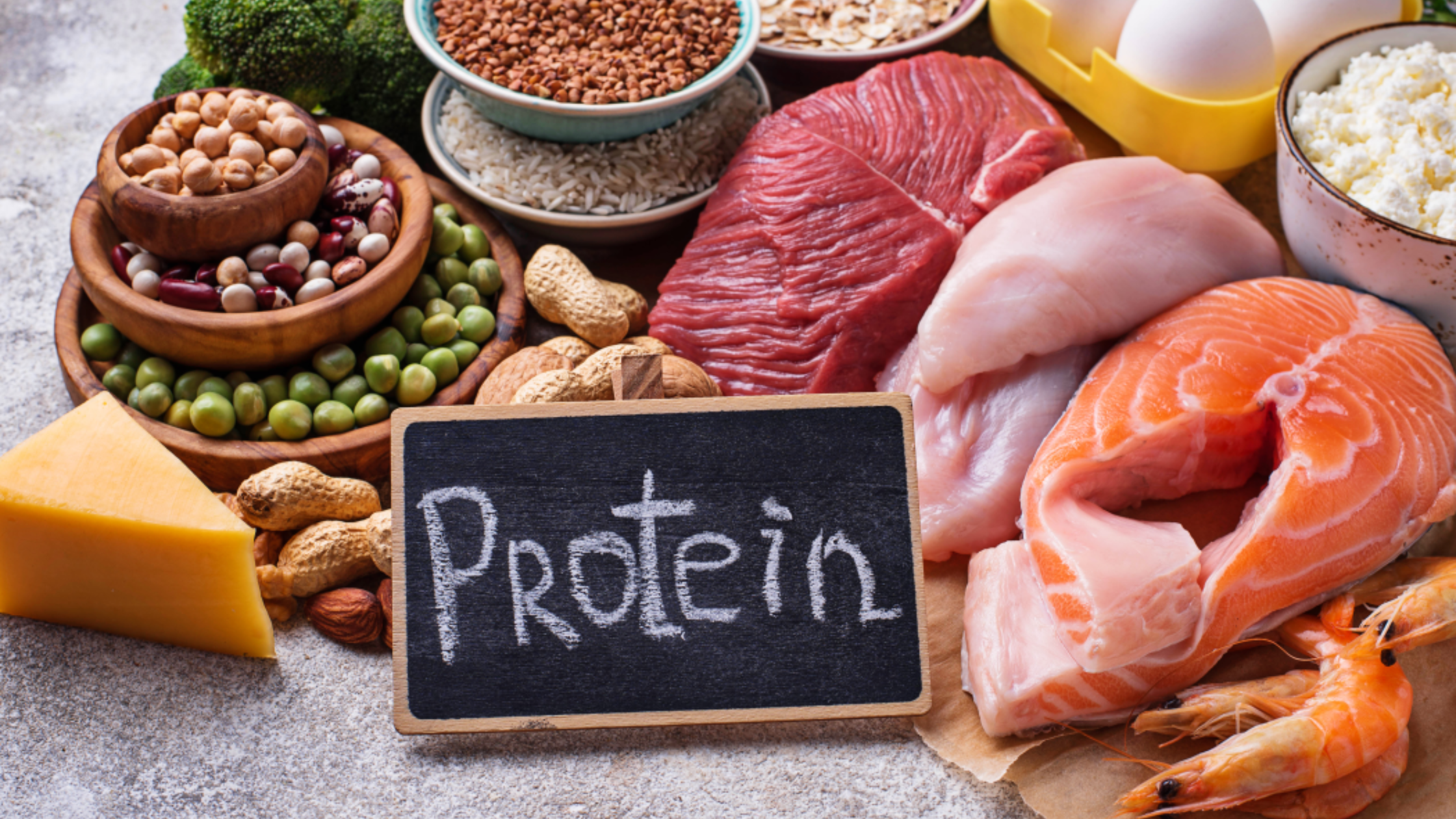
Some of the best sources of vegan-based protein are:
- Seitan. Many vegans and vegetarians enjoy seitan as a protein source. When cooked, it closely matches the appearance and feels of meat, unlike so many other soy-based faux lumps of meat. It contains roughly 25 grams of protein per 100 grams and is one of the highest plant protein sources. It is also referred to as gluten or wheat meat.
- Beans. Kidney beans, black beans, pinto beans, and the majority of other kinds are significant staple foods in many countries and contain a lot of protein per serving. Chickpeas are another kind of bean that is high in protein. An average cup of beans cooked appropriately has around 15 grams of protein.
- Nutritional yeast. Nutritional yeast is a yeast strain that has been deactivated and is offered commercially as flakes or yellow powder. It has a buttery flavor and is commonly used in recipes such as mashed potatoes as well as scrambled tofu. Nutritional yeast may also be used as a flavorful topping on popcorn or sprinkled on pasta meals.
- Hemp seeds. Hemp seeds are derived from the Cannabis sativa plant, frequently vilified for being related to the cannabis plant. However, hemp seeds contain microscopic levels of tetrahydrocannabinol, the chemical responsible for cannabis’s euphoric effects. Although hemp seeds are not as widely known as others, each 3-tablespoon dose contains 9 grams of protein.
- Spirulina. This blue-green alga is unquestionably nutritious. A 2-tablespoon portion contains 8 grams of high-quality protein, as well as 22% of your daily iron requirements and 95% of your everyday copper requirements. Spirulina is also high in potassium, magnesium, manganese, riboflavin, and a small quantity of the majority of other minerals your body needs, including vital fatty acids.
- Soy milk. Soy milk is manufactured from soybeans and often contains vitamins and minerals. It has 6 grams of protein per cup and is also high in calcium, vitamin B12, and vitamin D. Soy milk is available at most stores. It’s a highly versatile product that can be consumed independently or used in various cooking and baking recipes.
Omega-3 fatty acids

Some of the best sources of vegan-based omega-3 fatty acids are:
- Flaxseed. Flax is a fiber and food crop. Flaxseeds are high in fiber and omega-3 fatty acids, particularly alpha-linolenic acid. They also include phytoestrogens known as lignans, which are related to the hormone estrogen. Flaxseed fiber is present in the seed coat.
- Walnuts. The edible seed of any tree in the genus Juglans, notably the Persian or English walnut, Juglans regia, is known as a walnut. Although it is perceived and utilized as a nut in the culinary world, it is not a natural botanical nut. After fully ripening, the shell is removed, and the kernel is consumed.
- Edamame. Edamame is a dish of juvenile soybeans inside the pod prevalent in East Asian cuisines. The pods can be cooked or steamed and served with salt or spices. They are frequently blanched for 5 minutes in 4% salt water in Japan.
Vegans are frequently encouraged to take supplements because some nutrients, like vitamin B12, are not well-represented in plant diets. Many vegans also replace animal-based items with plant-based alternatives. In stores, you can get meat substitutes, dairy-free mozzarella, eggless eggs, and less processed options like tofu and tempeh.
What vegans don’t eat
Vegans enjoy veggies, to be sure, but what do they avoid eating? Vegans eschew all substances derived directly from animals (such as meat) or rely on animal exploitation in manufacturing (like milk and eggs). You should avoid the following foods if you are converting to a vegan diet:
As you get more familiar with veganism, you’ll naturally become more adept at identifying non-vegan components. Consuming complete meals and items with Vegan Trademarks can also help.
Potential Health Benefits of a Plant-Based Diet
Vegan diets have been linked to a slew of other health benefits. Some of them are outlined below:
It aids your immune system
Plants include essential elements that are not found in other foods. Plants’ vitamins and minerals, antioxidants, and phytochemicals help maintain healthy cells and keep your body balanced, allowing your immune system to work optimally.
Plants provide your body with the nutrients it requires to fight illness. A plant-based diet boosts your immune system, protecting you from infections and pathogens. A robust immune system is critical for lowering your cancer risk since it can detect and destroy abnormalities in cells before they develop an illness
Plant foods help to decrease inflammation
There are vital nutrients present in plants, which help to reduce the inflammation present in our bodies. The same phytonutrients and antioxidants that enhance your immune system circulate throughout your system, neutralizing contaminants from pollution, processed foods, germs, viruses, and other sources. Plant antioxidants bind to the so-called reactive oxygen species that might upset your body’s balance.
To minimize inflammation, consume plant-based meals and pay attention to your body’s cues about how meals work for you. Prolonged inflammation can cause cell and tissue damage and has been related to cancer as well as other inflammatory disorders such as arthritis. A plant-based diet could safeguard you since it eliminates some of the illnesses’ causes.
A plant-based diet help with weight management
The only thing more essential than keeping a healthy weight in relation to cancer is not smoking. This is because being overweight creates inflammation and hormone imbalance.
Obesity increases the chance of 12 distinct forms of cancer, including colorectal, postmenopausal breast, oesophagal, uterine, pancreatic, and kidney cancer. When you consume vegetables primarily, you eliminate many things contributing to weight gain.
Plants have a lot of fiber
All unadulterated plant foods contain fiber. It is the structural component of the plant, and eating more of it provides a plethora of benefits. A plant-based diet enhances gut health, allowing you to better absorb nutrients from the food that boost your immune system and decrease inflammation. This is particularly true for the risk of colorectal cancer, the third most frequent malignancy.
A plant-based diet also lowers your chances of developing other ailments
The benefits of consuming primarily vegetables go beyond lowering your cancer risk. A plant-based diet has also been linked to a lower risk of cardiovascular disease, stroke, diabetes, and various mental health issues.
Ensure your plant-based meals are nutritious
Even a plant-based diet depends on you to avoid vital dietary hazards such as sugar and fat. Using proper cooking methods and understanding how to get the most out of your veggies will help you reap all of the benefits of a plant-based diet. This means no deep-fried veggies. Highly processed meals, such as crackers and cookies, are also unhealthy.
Limit your intake of sweet treats and choose healthy grains. Eat brown rice and 100% whole wheat pasta and toast. Choosing plants can assist all of your body’s systems to function optimally.
Can a Vegan Diet Help You Lose Weight?
According to recent studies, veganism may even help you shed a considerable amount of weight. But how precisely? More study is needed. However, it is believed that being vegan may reduce the quantity of high-calorie items consumed. A vegan diet may require you to replace such meals with high-fiber options that are lower in calories as well as keeping you satiated for longer.
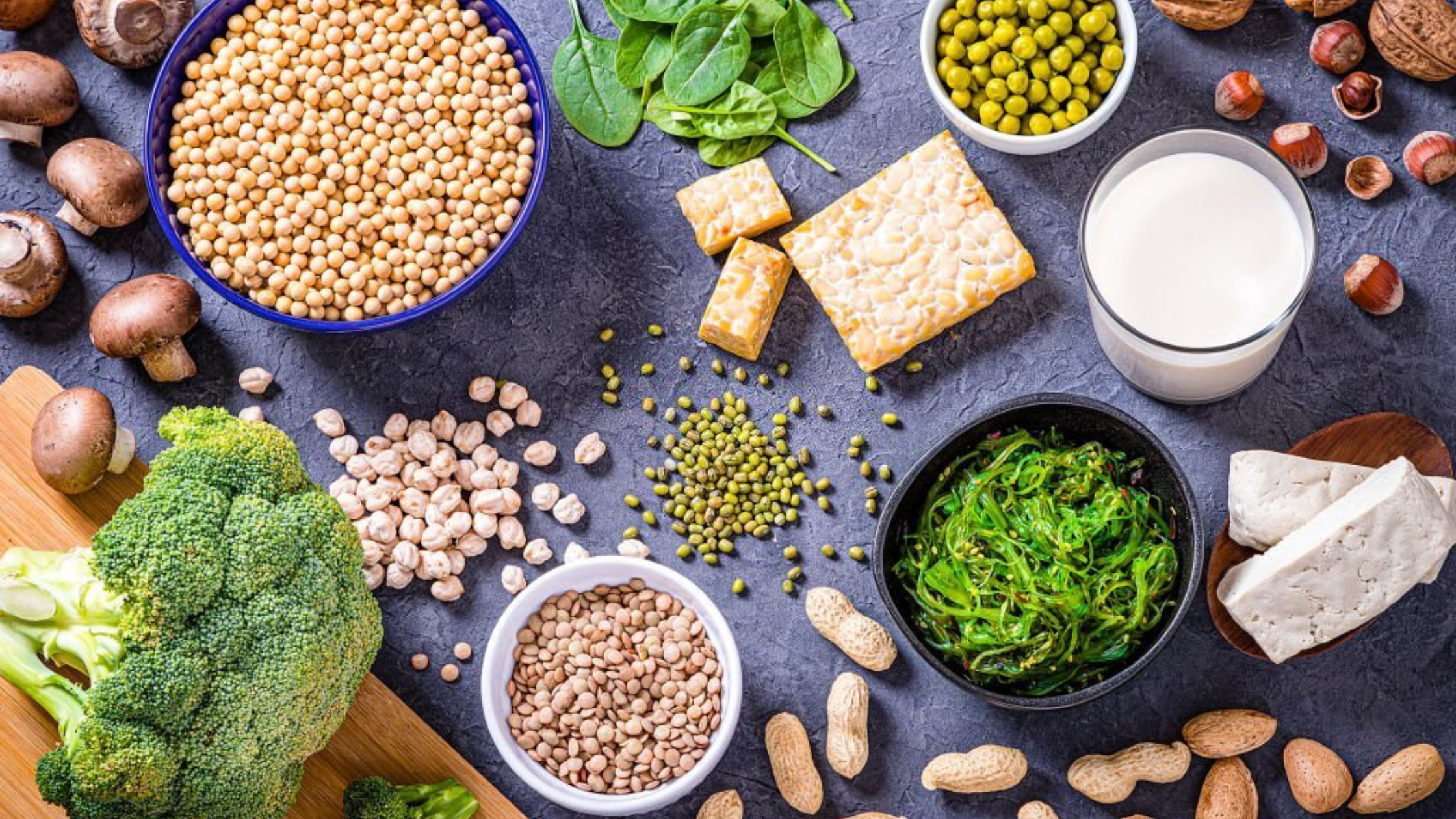
Is a Vegan Diet Healthy?
It may appear that eliminating some of the major food groups from your diet is bad. And it may be if you don’t pay close attention to your diet. Some people are concerned about receiving sufficient protein or other necessary nutrients, such as vitamin B-12. This vitamin is only found naturally in animal products, and a lack of it can lead to anemia.
Vegans should complement their meals with vitamins, vitamin-enriched cereals, and enriched soy products to avoid deficits. Others may experience yo-yo dieting after turning vegan. What exactly does this mean? It happens when one goes through phases of weight loss and afterward regains all or most of it, probably after struggling to keep to vegan-only diets.
This form of dieting has been linked to a number of adverse health implications, including an increased risk of developing type 2 diabetes and cardiovascular disease. The objective, like with any diet, is to focus on nutrient-dense meals rather than empty calories.
Weight loss tips
Women typically require 2,000 calories per day to maintain their weight. To lose weight, reduce this quantity to roughly 1,500 calories per day. Men should consume 2,500 calories per day to maintain a healthy weight and roughly 2,000 calories per day to drop fat. In terms of nutrition, a junk-food calorie does not equal a whole-food calorie.
Even if you keep under your calorie limit, stuffing yourself with vegan Nutter Butter cookies is not the same as stuffing yourself with buckets of fresh veggies. Many factors influence weight reduction, including age, height, diet, physical activity levels, various medical conditions, etc. While you cannot control these variables, you can manage your food and exercise. As a vegan, you should practice these healthy dietary habits:
Plan your meals
Meal timing is critical for increasing metabolism and establishing healthy eating habits. Try eating meals simultaneously daily to get your brain and stomach into a routine. Consume a more substantial breakfast than at other times of the day. This may include having a smaller meal and altering your lunchtime.
If you’ve worked out, attempt to eat within 45 minutes after finishing. This will aid in the feeding and mending of your muscles. When should you not eat? Within two hours of going to bed. Consuming carbohydrates before bedtime has been linked to increased weight and sleep disruption.
Ensure you’re consuming enough protein
Protein consumption should be approximately 5.5 ounces daily or 0.41 grams per pound. This suggests that a 150-pound female should take 61 protein grams per day. A 175-pound male should take about 72 grams per day. In terms of calories, there are around four calories in every protein gram. In this scenario, the female would require 244 calories from protein per day, whereas the male would need 288 calories from protein.
Don’t overindulge in plant-based treats
Consume them in moderation. The typical American consumes 22.2 tablespoons of sugar per day. Whether from a luscious sundae of ice cream or a batch of vegan biscuits, 335 calories with minimal nutritional value is still 335 calories. Sugar may affect your metabolism and cause health problems other than weight gains, such as increased blood pressure, irritation, and high blood triglycerides.
How much sweet stuff is too much? Women should strive to restrict their sugar intake to 6 tablespoons or 100 calories per day. Men should consume no more than nine tablespoons or 150 calories per day. Fresh fruit is a good alternative for a strict vegan dessert that is low in calories and free of added sugars and fats. Otherwise, enjoy a bit of a vegan dessert today and reserve the remainder for tomorrow or the following week.
Pros and cons of a vegan diet
While a vegan diet has recognized health benefits, some people find it difficult to sustain the lifestyle. Consider the following pros and cons of a vegan diet before deciding if it is the correct one for you.
Pros
Health benefits. Because a vegan diet is plant-based, consuming healthy whole cereals, lentils, fruits, and vegetables that several people do not consume daily is simpler. According to studies comparing different diets, vegan eating rates are highest in terms of nutritional content. A vegan diet is abundant in fiber, magnesium, vitamin C, iron, and folate while low in calories and saturated fats.
Mindful eating. This is a discipline in which we pay greater attention to our meals and increase our sensory awareness and enjoyment of a meal. To enjoy eating, the person must consciously focus on eating behavior rather than any precise nutritional consequence (carbohydrates, calories, fat, protein). Mindful eating is linked to a better connection with food and has been employed in several weight-loss regimens.
More meal options. The typical American diet is omnivorous. However, most people who follow a standard diet eat a restricted variety of foods. Many classic American meals, for example, include meat, a carbohydrate, and possibly a vegetable. Dairy products are frequently used in recipes as components, side dishes, or garnishes. However, many traditional dishes are incompatible with a vegan diet. As a result, when you first adopt this diet, you may need to become inventive and experiment with unfamiliar items.
Weight loss. Vegan diet helps you lose weight, according to research. Of course, simply being vegan does not result in weight loss. However, by adopting this diet, you remove several meals that are heavy in fat and calories.
Environmentally friendly. There are many people following a vegan diet because they think it is healthier for the environment. Environmentalists are increasingly concerned about livestock’s environmental impact and production techniques.
No animal harm. Since no animals are killed or harmed in producing vegan-friendly goods, many people adopt this diet out of concern for animal cruelty. According to one survey, the most common reason for adopting a vegan diet is to advocate for better compassionate treatment of animals. Vegans may also forgo wearing clothing or using goods from animals, such as fish, poultry, or bees.
Cons
Few eating options. The vegan diet is sometimes considered the most stringent plant-based diet. If you follow this eating plan and already consume a regular American diet, you may expect to eliminate most foods from your usual weekly menu. That amount of limitation is too extreme for some folks.
Nutritional deficits. A vegan diet can be nutritious. However, there are a few dietary inadequacies to be aware of. Researchers discovered that vegan diets are often deficient in calcium, which is needed for bone development, muscular contraction, and other vital activities. Vegans can enhance their calcium intake by consuming calcium-rich foods, including green leafy vegetables, lentils, sesame seeds, certain dried fruits, and calcium-fortified foods like plant kinds of milk, non-dairy yogurt, or calcium-fortified cereal.
Requires perseverance. Vegans must become accustomed to reading and understanding nutritional information and component lists, mainly if they prefer to ingest packaged foods. Foods that you would think are devoid of animal by-products may include gelatin, lactose, inulin, honey, or other ingredients that are not vegan.
Difficulty eating out. Consumers can examine the product description when purchasing vegan-friendly cuisine. However, you won’t see the ingredient list whether you dine at someone’s house or a restaurant. As a result, folks who follow a vegan diet may find it challenging to eat out.
Unreal expectations. A vegan diet is most likely to result in health advantages and a healthy weight, but it is not certain. For example, if you’re attempting to lose weight, you should still be cautious of what you eat and what you consume.
Isolation from others. Relatives, friends, colleagues, and acquaintances may question people’s dietary choices. While veganism is becoming more mainstream and plant-based meals are more commonly accessible, you may still be questioned and pushed about your reasons for opting for this lifestyle. This may lead to social isolation.
A 7-Day Sample Menu for a Vegan Diet
Here’s a simple menu for a week’s vegan dishes to get you started:
| Days/Meal | Breakfast | Lunch | Dinner |
| Monday | Vegan breakfast sandwich with lettuce, tofu, turmeric, tomato, and a plant-milk chai latte. | Salad with spiralised squash and quinoa with peanut dressing. | Dal with red lentils and spinach served on wild rice. |
| Tuesday | Fruity overnight oats with fortified vegetable milk, chia seeds, and almonds. | Sandwich with seitan and sauerkraut. | Salad with Pasta lentil Bolognese sauce. |
| Wednesday | A banana-flaxseed-walnut muffin and a mango-spinach smoothie made with enriched plant milk. | Tomato salad with Tofu sandwich | Vegan chilli on an amaranth bed. |
| Thursday | Whole grain bread with hazelnut butter, bananas, and plant yogurt with probiotics. | Soup with tofu noodles and veggies. | Sweet potatoes stuffed with beans, lettuce, cashews, corn, and guacamole. |
| Friday | Vegan chickpea and scallion omelet and fortified vegetable milk cappuccino. | Tacos veganos con salsa mango-pineapple. | Stir-fry tempeh with broccoli and bok choy. |
| Saturday | Wrapped spinach and poached tofu with a glass of fortified vegetable milk. | Soup with spiced red lentils, tomatoes, and spinach served with whole grain bread and hummus. | Sushi with vegetables, miso soup, shrimp, and wakame salad. |
| Sunday | Chickpea pancakes, avocado, guacamole, and a glass of enriched orange juice. | Vegan quiche with tofu and sautéed mustard greens. | Vegan spring rolls. |
Conclusion
Veganism may be chosen for ethical, ecological, or therapeutic purposes. The vegan diet is simple to follow and may bring a variety of health benefits. However, like with any diet, these benefits will only be apparent if you are persistent and base your diet on nutritionally plant-based foods rather than excessively processed ones. Vegans, particularly those who cannot satisfy their daily nutritional requirements solely via food, might consider taking supplements.
